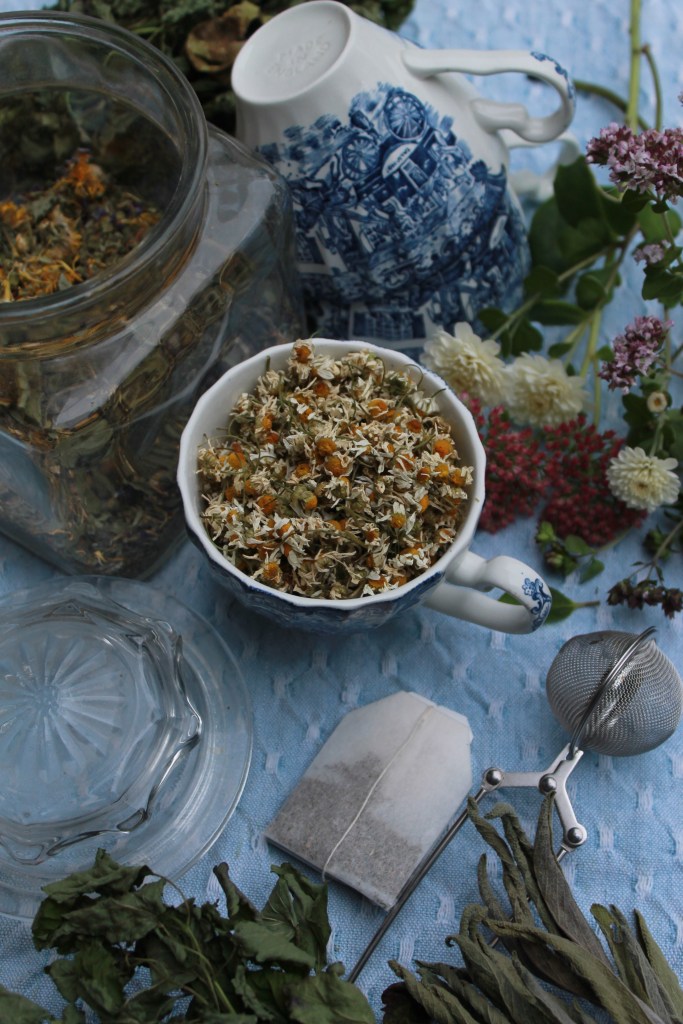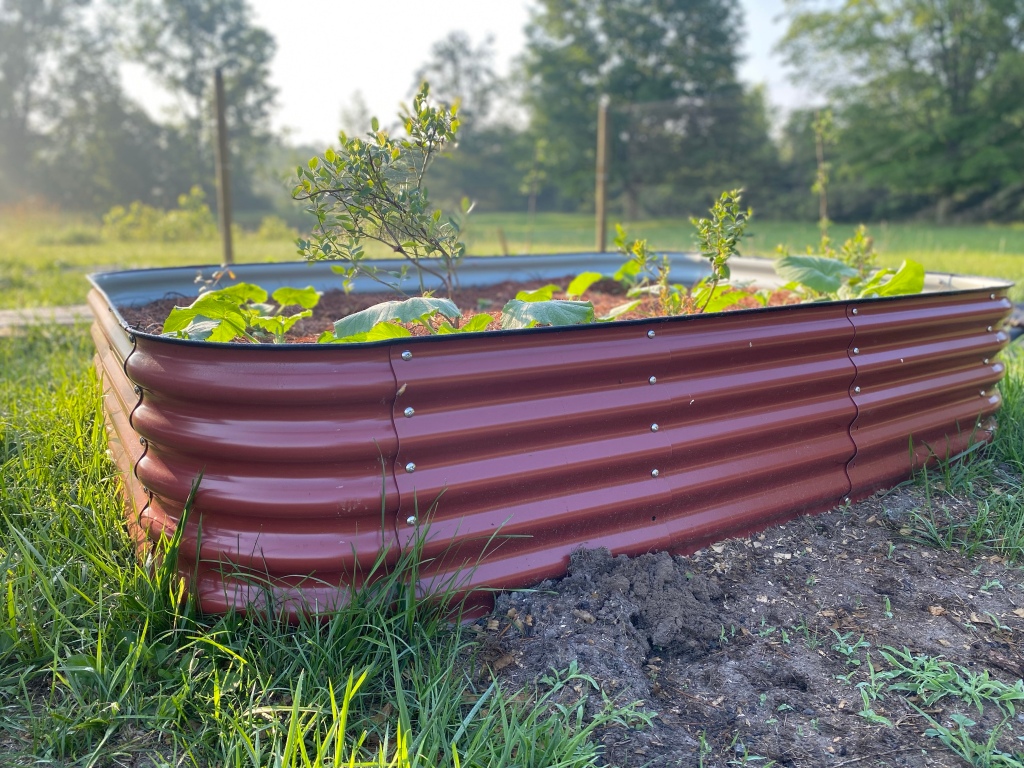
Tea dates into ancient human history and is speculated to be around before coffee.
Not only does tea taste good, but it can also bring many medicinal benefits to help with an assortment of ailments.
And there are plenty of flowers and herbs to grow right at home in your own garden that are easy and practical.
Here I go into 9 plants and herbs to grow to make a well-rounded, and practical tea garden in your own home.
Let’s dive in…
Flowers & Herbs to Grow in a Tea Garden
This is not an exhaustive list but a great launching point.
All these are easy to obtain seeds or plant starts for and are generally safe for many people.
These are also all beautiful; so your garden beds will look wonderful as they are useful.
9 flowers and herbs to grow in a tea garden:
- Mint
- Lemon Balm
- Thyme
- Bee Balm
- Calendula
- Chamomile
- Lavender
- Echinacea
- Catnip
Mint
Mint should always be planted in a limited space as they will invade.
Many grow them in pots or beds with deep walls buried in the ground.
Mint loves a sunny spot, and the flowers attract pollinators.
Cut and harvest from the bottom of the stem at any time throughout the growing season.
Hang drying bundles to preserve and store in glass jar.
Lemon balm
Lemon balm spreads slightly slower than mint, so it is easier to grow right in the ground.
Very easy to start from seed, perennial and if you allow it to go to seed at the end of the season it will continue to reseed.
If you are limited on space, a nice big pot should do.
Lemon balm needs sun and can be harvested at any time through the growing season by cutting at the bottom of the stem.
Hang dry, and store in glass jar.
Thyme
Perennial, best to start from a plant start from a local nursery.
There are a few thyme varieties out there, such as lemon thyme, that are worth looking into.
Thyme blooms attract pollinators, and the plant sits low making this a great choice for small gardeners. Thyme can tolerate a hot, sunny spot in your garden and can be harvested at any time throughout the growing season by cutting at the bottom.
Hang dry, and store in glass jar.
Bee balm
Perennial that will turn into a large plant with striking blooms.
Best to start from a plant start form a local nursery and can tolerate part shade.
They spread very slowly and are easy to split and move around the garden.
Harvest by cutting blooms right after they open or pull petals off individually.
Careful, because they live up to the name and attract beneficial insects including bees.
Dry on rack, store in glass jar.
Calendula
Annual, that will easily reseed if allowed to go to seed each year.
Calendula loves the sun but can tolerate some shade and be shoved next to other plants.
Calendula helps with aphids by acting as a trap to them, so naturally they are prone to aphids.
Do not treat them though because they are acting as a good companion plant!
Calendula is sticky so best to harvest clean blooms right after they open but popping the flower head off.
Dry on a rack, and store in glass jar.

Chamomile
Annual, easy to start with seeds and will reseed easily if allowed too.
These have dainty little flowers that are often confused with feverfew. So be careful on what you are purchasing because they act differently in the body.
Harvest by either cutting the stem or by picking off fresh flower heads individually.
Dry, and store in a glass jar.
Lavender
Perennial, best to start from plant start from local nursery.
Loves a sunny, hot spot with slightly sandy or poor soil.
Attracts loads of pollinators and can be dried for decorative uses too.
Harvest stems when they first bloom, care not to cut into the brown woody parts of the stem.
Hang dry and store in glass jar.
Echinacea
Perennial, best to start from a plant start, although can be started from seed easy enough.
Echinacea comes in many colors and varieties so one could easily tailor the look of their garden.
White, red, purple being the most popular colors and attracting loads of pollinators.
Roots can be harvested after 5 years but blooms work just as well.
Just harvest petals individually or cut off fresh blooms.
Dry on a rack and store in glass jar.
Catnip
Easy to start from seed, however, may need a limited space to grow in such as a pot.
Alike mint and lemon balm, you can harvest throughout the season by cutting the stems and hang drying them.

That’s It!
You can create a separate bed dedicated to tea or simply add into existing garden beds.
Feel free to explore different varieties within each plant; for example, look for lemon thyme, chocolate mint, or even bright red echinacea.
Be sure to research what each plant does medicinally while planning your garden.
Enjoy!
Be sure to subscribe below via email to be notified of new posts each week.
-Chelsea, The Cottage Vegetable
- Canning Plain Pumpkin (& how to purée it later) | Pressure Canning Recipe & Video
- Mini Fruit Tree Guild for Small Gardens | Companion Plant for Dwarf Apples or Pears
- April: It’s time to get your hands dirty!
- Pressure Canning Carrots & Onions, with Herbs | Raw Pack Method
- Growing Potatoes in Cardboard Boxes (with pictures)

The Cottage Vegetable
Gardening & Preserving for a Practical Kitchen
Coupon Codes, Disclaimers, Disclosures Here
Use coupon code COTTAGEVEG10 for 10% off your purchase site wide at OLLE GARDENS

12-IN 1 Metal Raised bed in Barn Red, featured in my own personal garden

Pingback: Pollinator Gardens; My Must Have Flowers for My Cottage Garden | The Cottage Vegetable
Pingback: Getting Started with Seeds; Frugal Gardening | The Cottage Vegetable
Pingback: Tea for Flu, Colds; Three Tea Blends | The Cottage Vegetable
Pingback: Growing Beans: How to Navigate Seed Labels | The Cottage Vegetable
Pingback: How to Start Gardening for the Absolute Beginner | 2023 | The Cottage Vegetable
Pingback: How to Start with Medicinal Herbs; Safe Research and 5 Herbs to Get Started | The Cottage Vegetable
Pingback: Medicinal Gardening: 10 plants that have Great Blooms | The Cottage Vegetable
Pingback: Chive Butter | FAST Stovetop Recipe for the Freezer | The Cottage Vegetable
Pingback: Spring Foraging | 3 Backyard Herbs to Harvest for Tea & Recipes during the Spring | The Cottage Vegetable